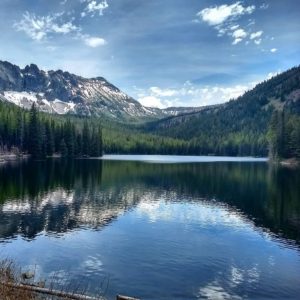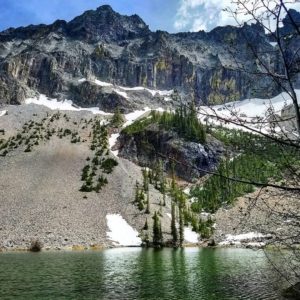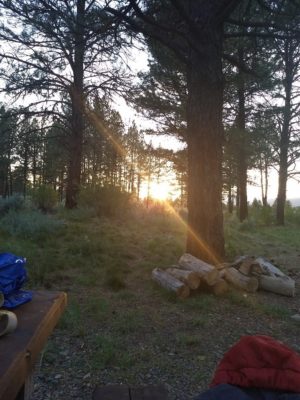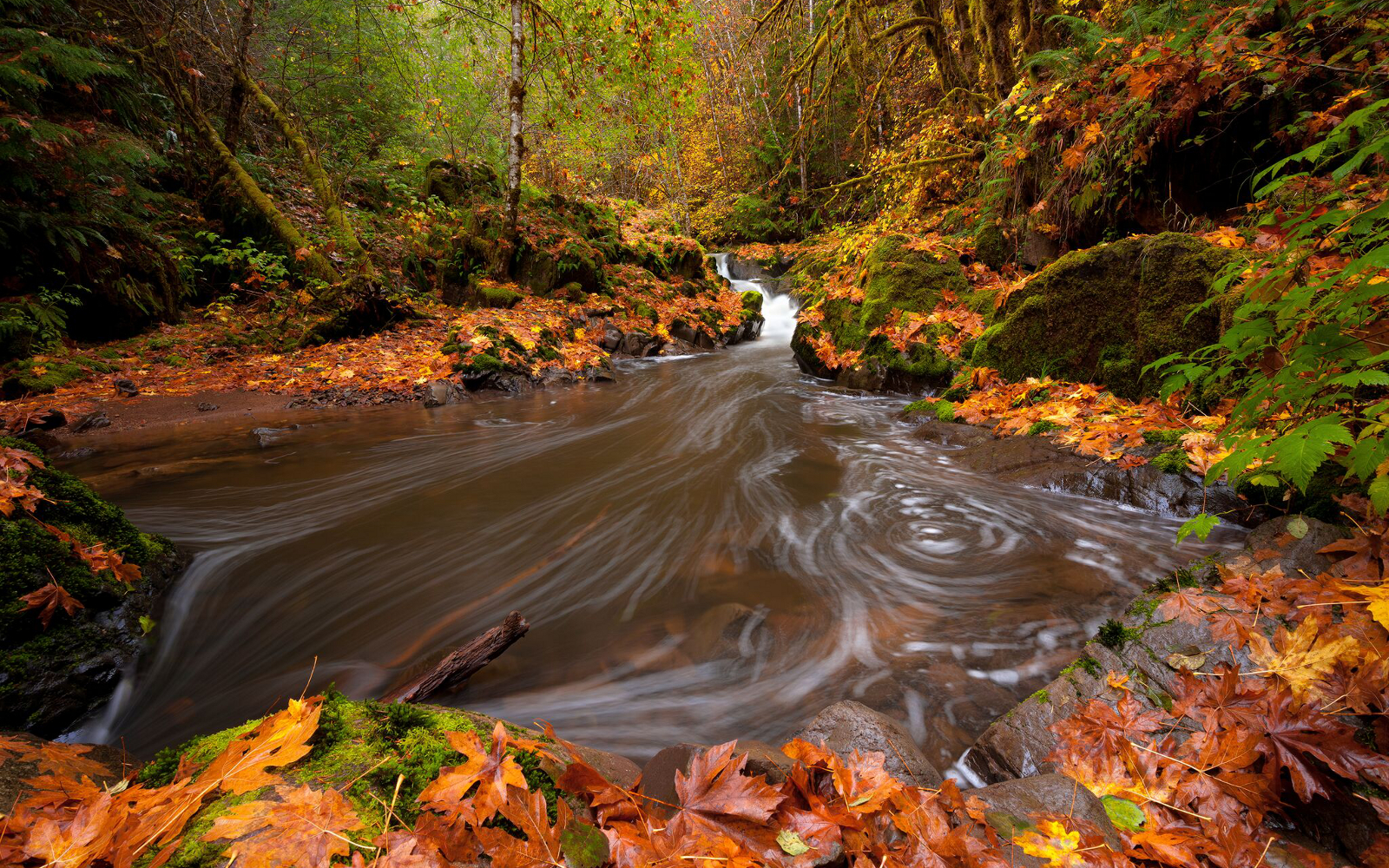by Mari Galloway and Renee Seacor
 After our first week on the job at Cascadia Wildlands, we took a road-trip to Baker City to attend the Oregon Department of Fish and Wildlife (“ODFW”) Commission hearing. With caffeinated beverages in hand, we left early in the morning so we could site-see along the way. We took the southern route from Eugene through Bend where we enjoyed incredible views and windy roads scaling the steep mountain passes.
After our first week on the job at Cascadia Wildlands, we took a road-trip to Baker City to attend the Oregon Department of Fish and Wildlife (“ODFW”) Commission hearing. With caffeinated beverages in hand, we left early in the morning so we could site-see along the way. We took the southern route from Eugene through Bend where we enjoyed incredible views and windy roads scaling the steep mountain passes.
After five hours on the road, we stopped outside of Prairie City to check out the Strawberry Wilderness. Driving through Prairie City made it hard to believe we were near any mountainous wilderness. As the name suggested, the area was surrounded by rolling lush green hills. However, after driving a few miles outside the “city,” a dramatic range reached before us. We drove down an unpaved road for miles and were perplexed by the online description classifying the trail as “highly trafficked.” Yet, a row of shiny cars were revealed to us after turning the last bend.
 We stretched our legs, ate our snacks, and changed our shoes before exploring what Strawberry Wilderness had to offer. The warm sunny day offered us perfect hiking weather and picturesque views of Strawberry Lake.
We stretched our legs, ate our snacks, and changed our shoes before exploring what Strawberry Wilderness had to offer. The warm sunny day offered us perfect hiking weather and picturesque views of Strawberry Lake.
After exploring the region, we piled back in the car to finish our last one and a half hours on the road before we reached our campsite. After camping out that night, we woke to a clear morning and headed into Baker City to testify in front of the Oregon Department of Fish and Wildlife (“ODFW”) Commission.
 We were preparing to give testimony to offer suggestions on proposed survival guidelines for the Marbled Murrelet on behalf of Cascadia Wildlands and other environmental groups. These survival guidelines are “Step 2” of the reclassification process of moving a species from a threatened to endangered status.
We were preparing to give testimony to offer suggestions on proposed survival guidelines for the Marbled Murrelet on behalf of Cascadia Wildlands and other environmental groups. These survival guidelines are “Step 2” of the reclassification process of moving a species from a threatened to endangered status.
“Step 1” of this process began with Cascadia Wildlands and other environmental groups submitting a petition to re-classify the Marbled Murrelet from threatened to endangered in June 2016. Upon review of the petition, the ODFW decided to move forward with the listing process and scheduled a hearing in Salem on February 2018. This meeting was attended by enthusiastic stakeholders that resulted in the commission moving the Marbled Murrelet from threatened to endangered under the Oregon Endangered Species Act.
 This decision is important for two major reasons. First, it reflects the true imperilment of the species. Second, it compelled the ODFW staff to create survival guidelines to ensure the persistence of the species. These guidelines impose quantifiable and measurable guidelines that ensure the survival of individual members of the species.
This decision is important for two major reasons. First, it reflects the true imperilment of the species. Second, it compelled the ODFW staff to create survival guidelines to ensure the persistence of the species. These guidelines impose quantifiable and measurable guidelines that ensure the survival of individual members of the species.
Due to an odd exemption in the state Endangered Species Act, the ODFW is not required to create these guidelines for species that were included at the time the law came in to affect—the Marbled Murrelet is one of these species. So, even though the Marbled Murrelet is considered threatened, its status was futile in ensuring its persistence because there were no protections to accompany the listing. Thus, Marbled Murrelet is threatened in name only.
This brings us to “Step 2.” Step 2 requires the ODFW commission to create survival guidelines at the time of listing the species. We understood this meeting to comprise “Step 2” of the re-classifying process. However, we were surprised upon arriving to find a room full of individuals asking the ODFW Commission not to reclassify the species as endangered. It soon became very clear after a few minutes of public testimony that the majority of testimony was not about survival guidelines. Instead, the meeting’s attendees used the hearing as their last chance to persuade the ODFW Commission not to uplist.
 Unfortunately, they listened. Oregon law requires the ODFW commission to reclassify species based on verifiable scientific information related to the species biological status. While economic considerations are admissible in developing survival guidelines, they cannot contribute to the decision to classify a species.
Unfortunately, they listened. Oregon law requires the ODFW commission to reclassify species based on verifiable scientific information related to the species biological status. While economic considerations are admissible in developing survival guidelines, they cannot contribute to the decision to classify a species.
Regardless of ODFW’s legal duty to list a species based on scientific evidence, the commission decided to decline to up-list the Marbled Murrelet with unsubstantial and unconvincing evidence. Furthermore, the commission was apprised of the Marbled Murrelet’s declining trend by the Cascadia Wildland’s petition, the final status review report, peer review of ODFW’s biological status report, and recommendations by its own staff. All of these sources were based on verifiable scientific information related to the species biological status. However, the Commission still decided to ignore its previous decision to uplist.
The sudden change of heart implies that the testimony from more than thirty people at the June meeting affected the ODFW Commission’s analysis. The majority of this testimony manifested relentless concern and apprehension regarding the potential economic impact of classifying the Marbled Murrelet as endangered. This concern predominantly stemmed from private timber and ranch industries.
After speaking with some down-trodden representatives of the Portland Audubon Society, we got back in the car after a long day and started our six-plus-hour journey back home. We lamented and reflected on the day with disappointment and began brainstorming the illegality of the ODFW’s action. Our first week working at Cascadia Wildlands showed us how disappointing and surprising some losses can be. With the experience behind us, we felt inspired and motivated to continue work on the issue and see what protections we can persuade state agencies to issue for the declining Marbled Murrelet.
You can take action now to protect the marbled murrelet!

